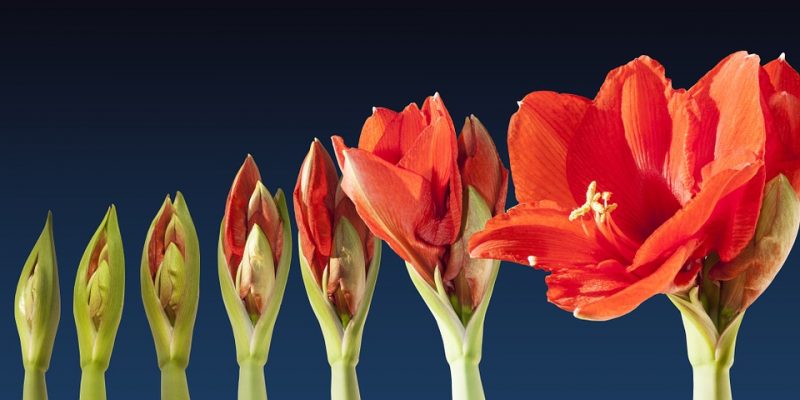Plant Care
Amaryllis Care
These bulbs are primarily grown between Thanksgiving and Christmas, though they can be planted anytime mid-fall through early-spring. Amaryllis can be purchased in four ways; bulbs, waxed bulbs, bulb kits and started plants.
Light – Bright, indirect light. As the Amaryllis grows, rotate it regularly to unsure the stem grows straight. Avoid direct sunlight to prevent leaf scorch. Low light levels will result in stunted growth and minimal (if any) flowering.
Water – When starting from a bulb, you’ll want to mist the top layer of soil regularly. Once they have begun to grow, switch over to regular watering and water once the third of the soil is dry. Do not over water as the bulb can begin to rot.
Soil – Lightweight, well-draining soil like Espoma Potting Soil. Another excellent choice is cactus soil, like Espoma Cactus Soil, as it dries faster and lessens the potential for bulb rot.
Temperature – Amaryllis prefer cooler temperatures, ideally between 60° and 65°. Do not expose to temperatures below 50° and protect them from drafts.
Humidity – Average home humidity levels are perfect for Amaryllis.
Fertilization – Fertilize monthly with a balanced fertilizer, such as Bonide Liquid Houseplant Food, once the Amaryllis has begun to produce leaves. Stop fertilizing in late summer in order to let it go dormant and resume fertilization once new growth has emerged.
Size – Depending on variety, Amaryllis can grow between 4 and 12 inches tall.
Repotting – The best time to repot Amaryllis is during its dormant period. Once the leaves have died back, it’s safe to repot. Amaryllis prefer to be moderately root bound and generally don’t need to be repotted frequently. When selecting a container, choose one with good drainage and that is no more than 2 inches wider than the bulb.
Propagation – Amaryllis bulbs produce offsets which are essentially new bulbs that begin to grow off the main bulb. These offsets can be cut off and planted on their own once they are large enough, usually when they’re about 2 inches tall and 1 to 2 inches wide.
Toxicity – Moderately toxic to people and pets if ingested.
Waxed Amaryllis – The only care a waxed Amaryllis bulb needs is bright, indirect sunlight. There is no need to water or pot the bulb. Once the bulb has finished blooming, throw it out. By coating the bulb with wax, it will be unable to re-grow next year.
Planting Amaryllis Bulbs –
- If your bulb didn’t come with a container, select one with good drainage and no more than 2 inches wider than the bulb.
- Fill the bottom third of the pot with soil, set the bulb on the soil and check to see if the top of the bulb is visible over the rim of the pot. If it is not, remove the bulb and add more soil until it becomes visible.
- Once your bulb is situated properly, fill in the empty space around the bulb with soil. Leave the top third of the bulb exposed.
- Heavily spray down the top layer of soil with a spray bottle and set in a brightly lit spot.
Getting Amaryllis to Bloom Again – Non-waxed bulbs can be kept for years. The trick to getting an indoor Amaryllis to bloom again is to give it a period of dormancy to recover. Towards the end of summer, stop watering and move the plant to a dark, cool (55° to 60°), dry location. Allow the leaves to die back and repot if needed once the foliage has died. After it has rested for a couple months, bring it back into a brightly lit area and begin caring for it as you would a brand-new bulb.



